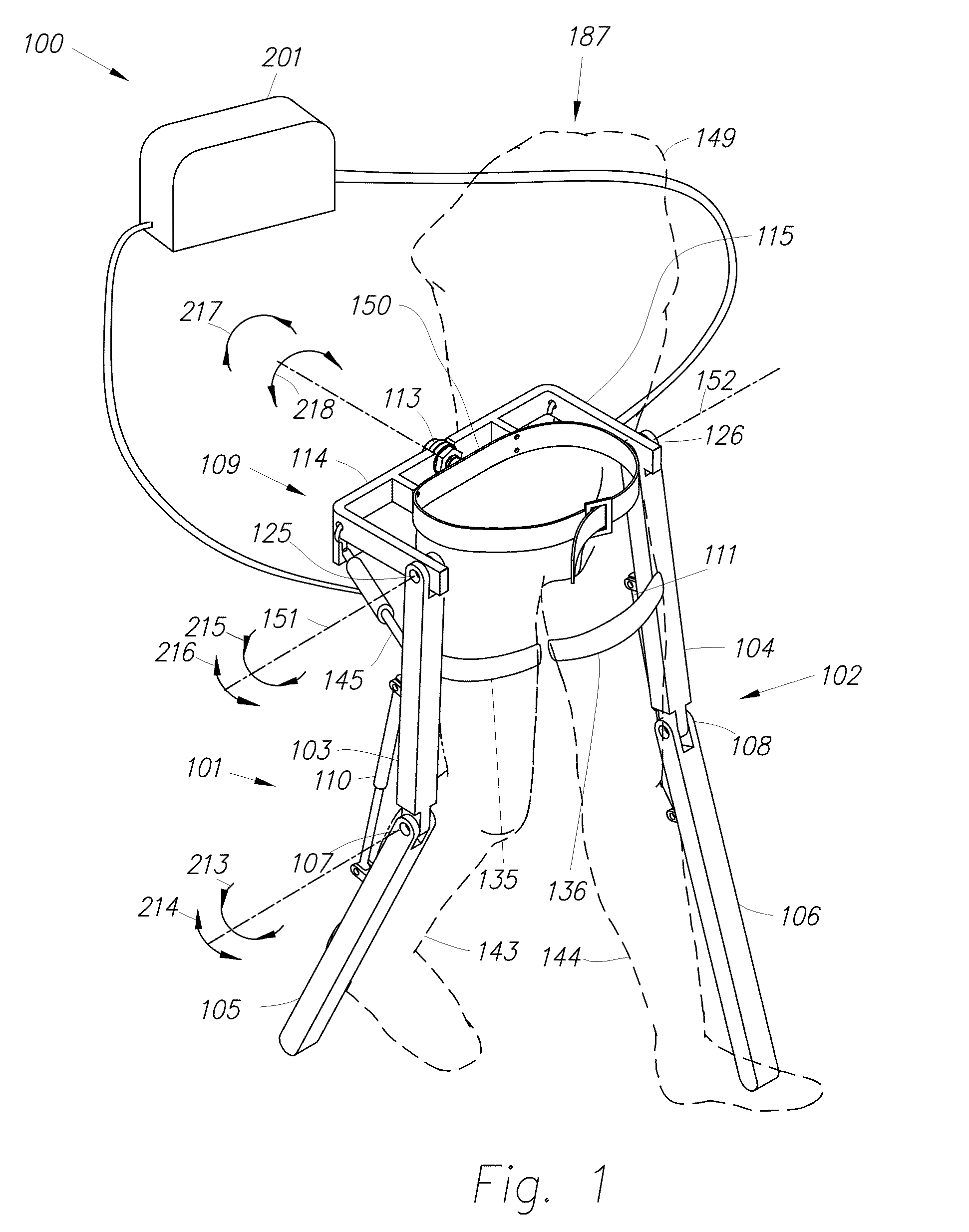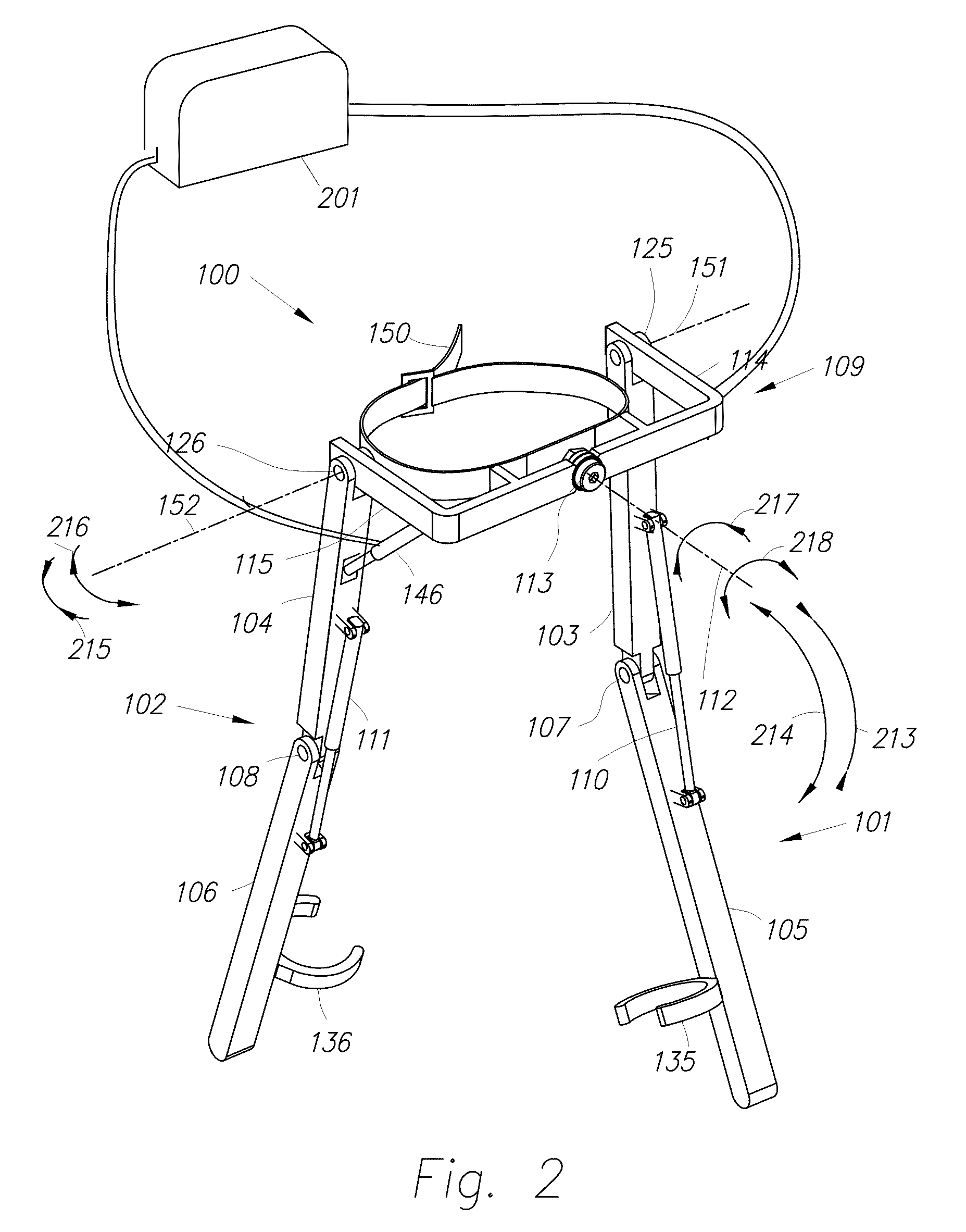Device and Method for Decreasing Oxygen Consumption of a Person During Steady Walking by Use of a Load-Carrying Exoskeleton
a technology of exoskeleton and load, which is applied in the field of lower extremity exoskeleton, can solve the problems of affecting certain cardio and other physiological parameters of users, people of ordinary ability often consume a great deal of oxygen, etc., and achieves the effects of reducing the oxygen consumption and heart rate of wearers, reducing the energy consumed by a person, and reducing the oxygen consumption and heart rate of peopl
- Summary
- Abstract
- Description
- Claims
- Application Information
AI Technical Summary
Benefits of technology
Problems solved by technology
Method used
Image
Examples
Embodiment Construction
[0049]The present invention provides for an exoskeleton device that actually decreases a wearer's oxygen consumption. In accordance with a first embodiment of the present invention, as shown in FIG. 1, a lower extremity exoskeleton 100 wearable by a person 187 is able to decrease the wearer's oxygen consumption. Lower extremity exoskeleton 100, in addition to other components, includes two leg supports 101 and 102, which are configured to be coupled to person's lower limbs 143 and 144 and configured to rest on the a support surface (e.g., the ground) during their stance phase. The term stance phase should be understood to mean the position a leg support 101 or 102 is in when a downward force is being applied to a user's foot and leg associated with the leg support 101 or 102 and the leg support 101 or 102 is in contact with the ground. The leg supports include thigh links 103 and 104 and shank links 105 and 106. Two knee joints 107 and 108 are configured to allow flexion and extensi...
PUM
 Login to View More
Login to View More Abstract
Description
Claims
Application Information
 Login to View More
Login to View More - R&D
- Intellectual Property
- Life Sciences
- Materials
- Tech Scout
- Unparalleled Data Quality
- Higher Quality Content
- 60% Fewer Hallucinations
Browse by: Latest US Patents, China's latest patents, Technical Efficacy Thesaurus, Application Domain, Technology Topic, Popular Technical Reports.
© 2025 PatSnap. All rights reserved.Legal|Privacy policy|Modern Slavery Act Transparency Statement|Sitemap|About US| Contact US: help@patsnap.com



